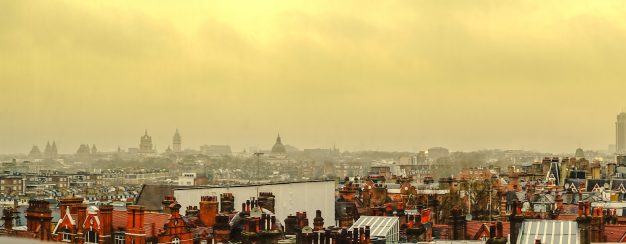
London’s toxic air: how schools are protecting pupils
Expanding a successful clean air scheme will enable 200 London schools in areas of high air pollution introduce measures to protect pupils from toxic air.
Five of London’s most polluted areas have committed to extend Mayor Sadiq Khan’s air quality improvement programme to improve air quality in their schools, joining dozens of others which have already introduced the scheme.
Detailed air quality audits were carried out in some 50 schools across 23 London boroughs, measuring air quality in some of the capital’s most polluted schools before making recommendations designed to protect pupils. Central government provided one million pounds which saw each school receive a £10,000 starter grant. It also enabled any other London schools located in high pollution areas to apply for ‘green infrastructure’ spending.
‘the capital’s most polluted schools’
Newham, Islington, Southwark, Westminster and Brent, which represent a very broad cross-spectrum of pupils from different areas, are the latest boroughs to be involved. Newham Council is one area where pollution is a significant issue. It has one of the highest rates for deaths linked to air quality, with seven out of every 100 deaths attributable to dirty air. Newham Council is now extending audits to all primary and secondary schools as part of a long-term study. One local school, Salisbury Primary, used its £10,000 – plus additional council funding – to relocate its day care centre playground away from a busy road, thus reducing the children’s exposure to harmful emissions.
Sadiq Khan, Mayor of London, said: “London’s toxic air is directly harming the health of our children. Working with boroughs like Newham we are determined to do everything in our power to protect them and ensure future generations breathe cleaner, healthier air. It’s wonderful to see Salisbury Primary School leading the way and transforming their environment into a safe, clean space for everyone. I’m delighted that other boroughs will be following their lead in expanding our innovative air quality audits to all state run schools.”
‘impact of traffic pollution’
Andrea Choppy, headteacher of Salisbury Primary, said: “For many years we have been very concerned over the impact of traffic pollution on the health of our children as their playground adjoined a very busy road. Our Junior Travel Ambassadors (JTA) and our school council children have worked very hard towards campaigning for better air quality around our school. They were delighted when our school was highlighted as one that would be receiving the start-up funding from the Mayor’s Air Quality Audit Programme.
This, along with match funding from Newham Authority and further funding from the Local Authority, enabled us to install green screening on our main fence, redesign the playground and implement the changes that we have today. Our JTA’s are still campaigning against idling cars on busy roads that are adjacent to our school and welcome the opportunity of working further with the Local Authority to perhaps implement a ‘Red Zone’ around our school.”
‘legally binding targets’
Sadiq Khan added: “I’ve moved as fast as I can in London to implement the most ambitious plans to tackle air pollution of any major city in the world. This includes implementing the world’s first Ultra Low Emission Zone, which has already reduced harmful nitrogen dioxide pollution by almost a third in central London zone. Government must follow London’s lead and help clean up filthy air across the country. A key part of this is legally binding targets in the upcoming Environment Bill to meet World Health Organization air quality guidelines by 2030.”
While these particular measures are being introduced in London, they demonstrate the challenges facing individual cities across the globe, and what actions can be explored. World health experts have long since known that toxic air can have – and is having – on the health and, ultimately, the life expectancy of children. A UNICEF report last year showed that London was among the world’s ‘megacities’ where people were polluting air at a rate that is becoming unsustainable.
UNICEF also says that almost one in seven of the world’s children, which amounts to some 300 million, live in areas with the most toxic levels of outdoor air pollution. This is six or more times higher than international guidelines. Read more about the findings here.
Read the World Health Organization’s guidelines and statistics on air pollution here.




